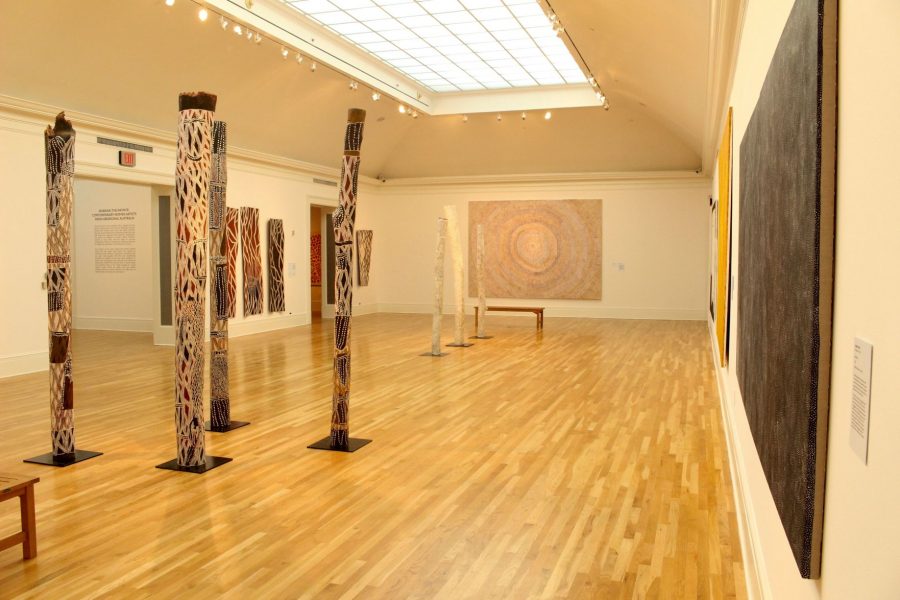Marking the Infinite: Contemporary Women Artists from Aboriginal Australia
Last fall, the Marking the Infinite: Contemporary Women Artists from Aboriginal Australia exhibition featured the art of aboriginal women
October 2, 2016
Currently on display at the Newcomb Art Museum of Tulane University is an exhibit with a paradox. While its cultural origins are different from New Orleans’, its deeper meanings and themes evoke similarities between people of all walks of life.
Located in the Woldenberg Art Center is “Marking the Infinite: Contemporary Women Artists from Aboriginal Australia.” Henry F. Skerritt best describes the universal feelings the contemporary artists from the Aboriginal regions of Australia draw upon in the exhibit.
“It is also the most human of urges to look to the heavens and contemplate the universe,” Skerritt said in his upcoming book “Marking the Infinite,” which details the exhibit’s themes and artists and is available to read in the gallery.
The captivating pieces that decorate the gallery rooms capture the universal tendency for us to pose existential questions regarding the purpose of life and our natural world.
Through mediums ranging from towering totems, abstract paintings and complex weavings, the Aboriginal artists infuse the culture of their homes into their pieces and draw upon these mystical feelings that resonate within all of us.
In the exhibit, one can find an interesting three-piece work by artist Nonggirrnga Marawil from the Yolngu region. In the piece entitled “Lightening and the Rock,” Marawil uses tree bark as a canvas which provides a raw, natural material that aids her expression of the natural world based off what the Yolngu people view as its “key elements”: lightning, fire, water and rock. The piece provides a glimpse into Marawil’s personal interpretation of these natural entities, while also tapping into our universal connectivity to these forces as well.
It does not require much of a search to find other pieces in the exhibit that are also crafted with the natural compounds and fibers of the Aboriginal lands. The constant utilization of these materials further express the connection all people have with the natural world.
Another extremely captivating piece in the exhibit is the work of artist Nyapanyapa Yunupingu, entitled “Light Painting.” The piece itself is an ironic clash between content and medium — historic cultural pictograms viewed on a digital screen. Yunupingu also furthers the piece’s complexity by processing it around a special algorithm that constantly transforms the pictograms on the screen, perpetually altering the display.
This constant change within the art itself not only drives the “meaninglessness” Yunupingu says she strives for in the piece’s description, but also captures the essence of the gallery as a whole — universal human emotion represented through Aboriginal media. This piece recalls the challenge of dealing with the passing of time, as well as the inevitable change to even the most simple things in life.
“Marking the Infinite” provides a fresh perspective on the contemporary art world, shifting the perpetual focus on cities and “moderntopia” to the land the Aboriginal-Australian artists call home. Though the geographic origin of the art may be foreign to the viewer, the human feelings and universal questions the pieces express are not. The exhibit will be on display at the Newcomb Art Museum through December.










Leave a Comment